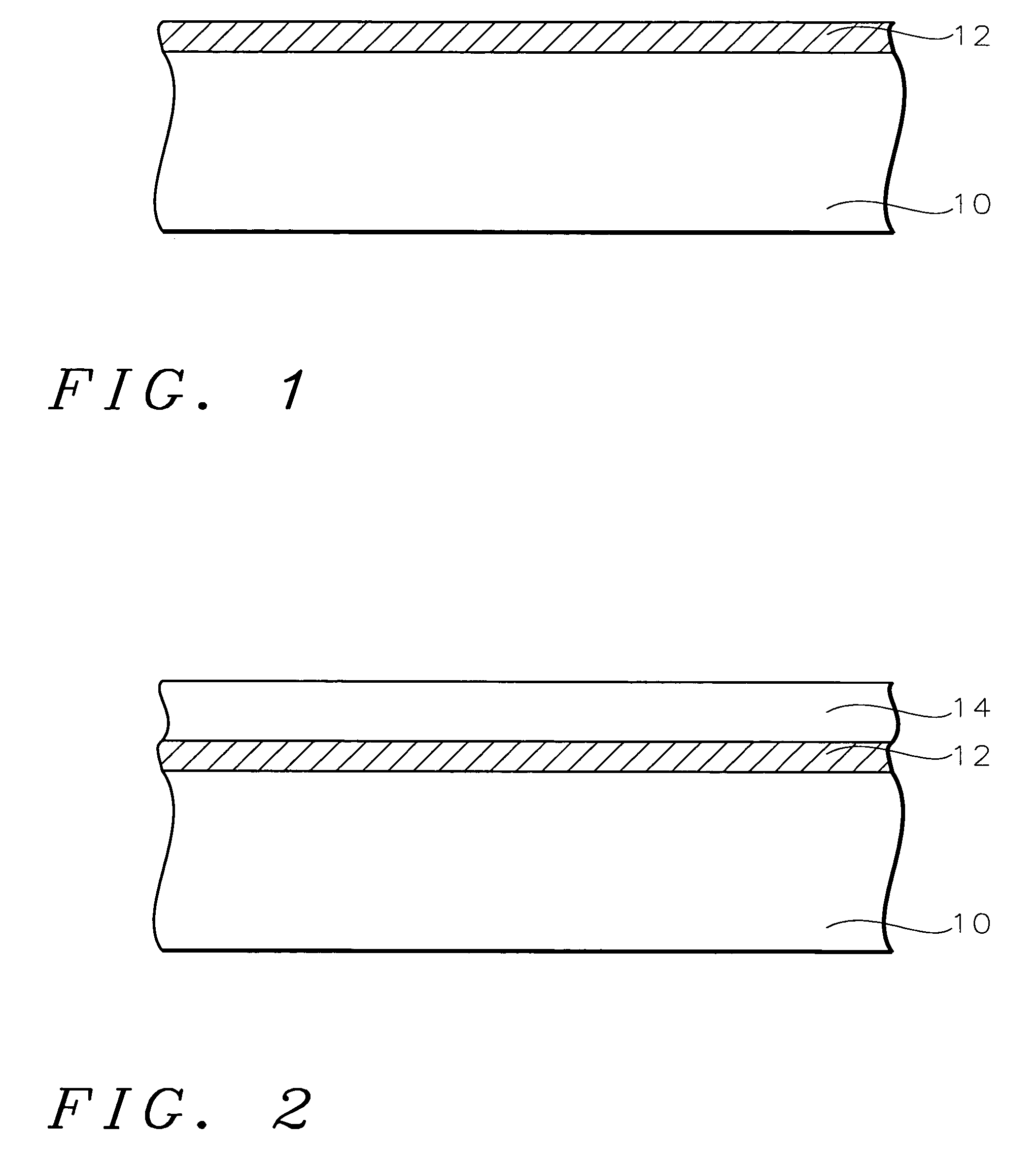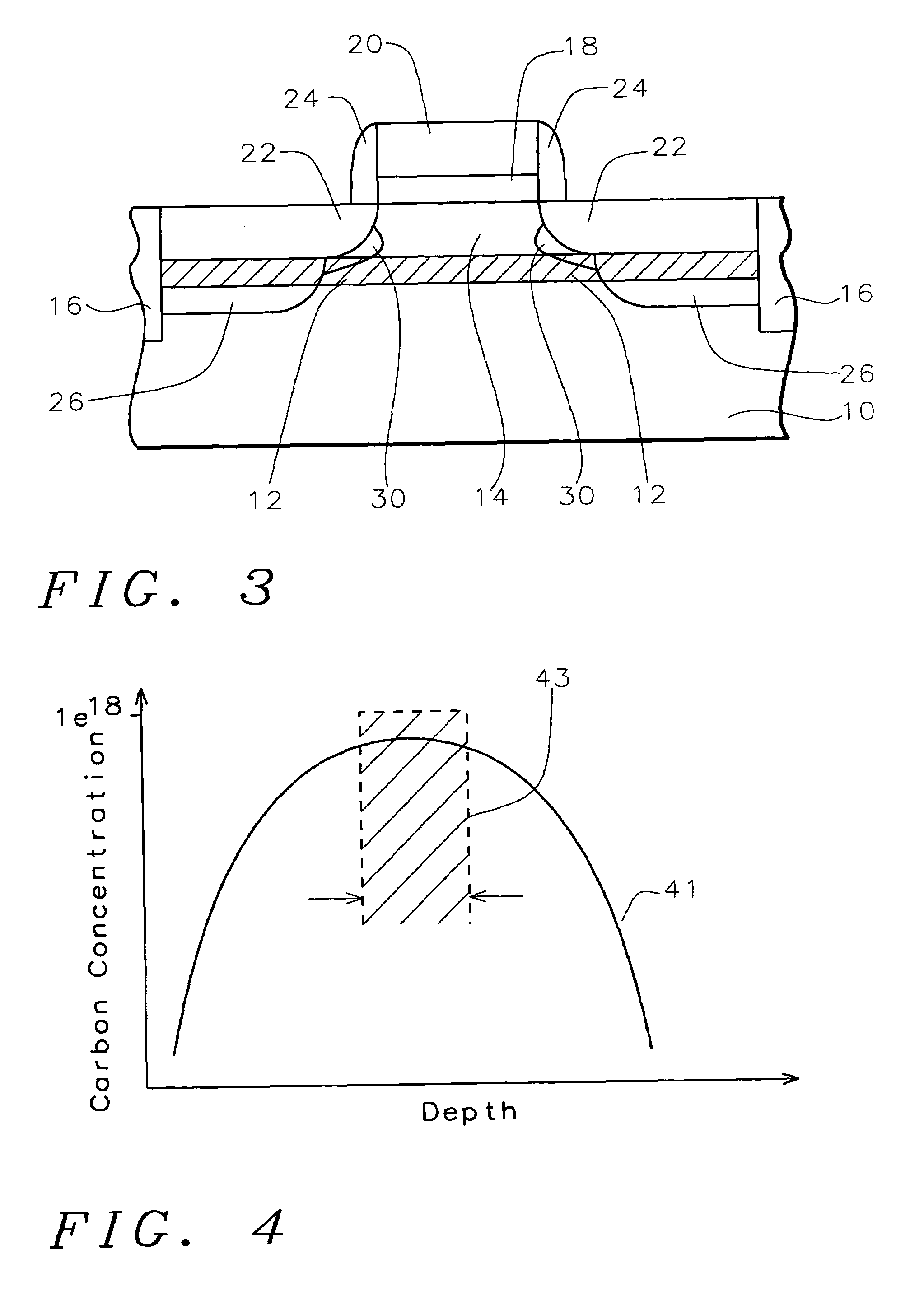End of range (EOR) secondary defect engineering using substitutional carbon doping
a substitutional carbon and secondary defect technology, applied in semiconductor devices, single crystal growth, chemistry apparatus and processes, etc., can solve the problems of end of range (eor) secondary defect formation at the tail end of the profile, excessive dopant diffusion, and high cost, so as to prevent transient enhanced diffusion of indium, prevent and prevent the effect of end of range secondary defect formation
- Summary
- Abstract
- Description
- Claims
- Application Information
AI Technical Summary
Benefits of technology
Problems solved by technology
Method used
Image
Examples
Embodiment Construction
[0022]The present invention introduces a layer of substitutional carbon to the tail end of the halo doping profile in order to reduce the secondary defect formation due to the indium halo doping implantation. It is a simple process, yet superior to carbon co-implantation as no additional implant damage is introduced through this method.
[0023]A carbon implant by itself would inherently cause damage at the tail end of the implantation profile. This causes additional damage which can be avoided if the carbon is doped using the CVD method. Carbon doped by this method is substitutional and does not require an additional annealing process. FIG. 4 illustrates the carbon implant profile 41 of the prior art methods where carbon is implanted into silicon. The profile 41 is a skewed gaussian-like distribution. Moreover, the smaller carbon atoms diffuse very fast making it difficult to control the profile. Using the RPCVD method of the present invention, a much more precise and accurate doping ...
PUM
| Property | Measurement | Unit |
|---|---|---|
| thickness | aaaaa | aaaaa |
| thickness | aaaaa | aaaaa |
| thickness | aaaaa | aaaaa |
Abstract
Description
Claims
Application Information
 Login to View More
Login to View More - R&D
- Intellectual Property
- Life Sciences
- Materials
- Tech Scout
- Unparalleled Data Quality
- Higher Quality Content
- 60% Fewer Hallucinations
Browse by: Latest US Patents, China's latest patents, Technical Efficacy Thesaurus, Application Domain, Technology Topic, Popular Technical Reports.
© 2025 PatSnap. All rights reserved.Legal|Privacy policy|Modern Slavery Act Transparency Statement|Sitemap|About US| Contact US: help@patsnap.com



